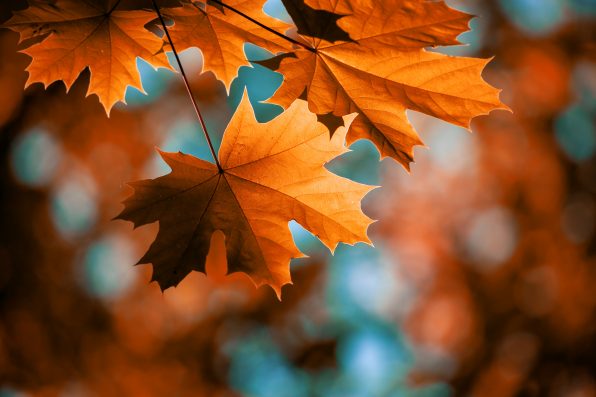The Science Behind Autumn’s Changing Leaves: It’s Not Magic, It’s Chemistry

Every fall, we can count on the leaves to change color. It’s a process we’ve grown to expect and accept as part of the season.
Most of us probably don’t question the transformation of the trees around us since it happens without fail each year as if by magic.
But in case you’ve been mulling over the matter, here’s an explanation of why the leaves turn vibrant shades of red, orange, and gold.
The driving force behind the color change is actually science, not sorcery. A substance called chlorophyll is found in green plants, and it’s responsible for giving them their green color. Chlorophyll helps plants absorb energy from sunlight, allowing them to begin photosynthesis.
As fall approaches, the days tend to get shorter, which reduces the amount of sunlight that trees receive.
As a result, the chlorophyll breaks down, and its production grinds to a halt, causing the green pigments to fade away.
The Smithsonian Institution states that the yellow and orange colors we associate with autumn are always in the leaves, but the chlorophyll conceals them during the warmer months. Once the temperatures drop and the chlorophyll is gone, those colors are unmasked.
The red hues are developed from a pigment called anthocyanins, which are produced during the fall season due to a combination of bright sunlight and sugars that get trapped in leaf cells.
Exactly when you will see leaves change color depends on a variety of factors, such as weather conditions and where you’re located in the country.

lms_lms – stock.adobe.com- illustrative purposes only
Leaves generate the best, most vivid colors when the days are cool, dry, and sunny and the nights are crisp. They follow the typical pattern of changing in northern states first, then working their way south.
According to the U.S. Forest Service, tree species also influence the timing of the leaves’ color change and what shades they’ll turn. For example, the leaves of oak trees will become red, brown, or russet, while aspens morph into a golden yellow hue.
On the other hand, some trees, like the striped maple, exhibit no color at all.
If true crime defines your free time, this is for you: join Chip Chick’s True Crime Tribe
In 1972, She Went Out On A Date With A Man And Was Tragically Never Seen Again
She’s Showing You How She Gave Her 1950s Pink Bathroom A Modern Makeover
She Was The First African American Woman To Open Up A Bank In The United States
Sign up for Chip Chick’s newsletter and get stories like this delivered to your inbox.
More About:News